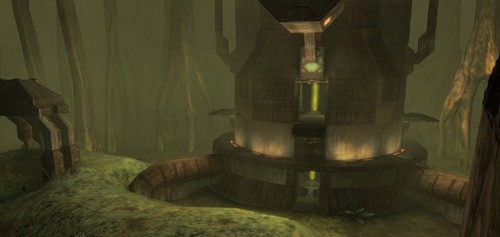Are video games art? Who really cares – so long as they are well designed, immersive and fun! But many people DO care, and the need for some – film critic Roger Ebert in particular – to stick his opinion where he has no knowledge has resulted in a large and broad-ranging debate. Ultimately I think most gamers would say that video games have the potential to be art, but that not all video games ARE art.
At the peoak of the debate in 2009, Ebert and game designer Kelee Santiago had quite a series of exchanges. From Smithsonian Magazine:
A couple of years ago, video game designer Kellee Santiago and film critic Roger Ebert got into an online debate over whether video games qualify as art. Ebert, a naysayer when it comes to the subject, watched a TED talk that Santiago gave at the University of Southern California in March 2009. In it, Santiago declared that video games are art, and Ebert dug his heels in further, poking what he saw as holes in the designer’s argument. In her defense, Santiago noted Ebert’s inexperience with gaming and wrote, “It’s good for dinner party discussion and entertaining as an intellectual exercise, but it’s just not a serious debate anymore.”
Santiago, the co-founder and president of thatgamecompany, a Los Angeles-based studio that develops experimental games, even challenged Ebert to give Flower, one of her games, a try. Santiago sent Ebert a PlayStation 3 and a copy of the game, but there has been no word on whether he has played it. Flower, released in 2009, is featured in “The Art of Video Games,” a highly anticipated exhibition about gaming’s 40-year history, which opens at the Smithsonian American Art Museum on March 16.
This all made for interesting theater, but never really answered the unanswerable question about defining what makes art. Fortunately since then we have gotten back to just playing games, good and bad, handheld and console, and have been having a blast doing so.
To me, Top 10 (or 5 or 25) lists exist to stir debate at best, and as link bait at worst. They are ALL inherently ‘wrong’ since the evaluation criteria are subjective, but the best of them provide a basis for discussion. Now we have a list in Smithsonian Magazine from Santiago of “five groundbreaking video games that show the evolution of the art form.”
Here is the list with snippets:
Zork (1980) – Zork sums up the first age of digital games and what they could provide. Completely text-based, the graphics lay in the infinite imaginations of the players, making the world appear vast and magnificent. There was a real sense of place, of possibility, and the experience of playing it on a computer was completely unique.
Super Mario Bros. (1985) – Who can forget Super Mario Bros.? Nintendo’s spinoff to its 1983 game Mario Bros. stars Mario, a plumber, and his brother, Luigi, in a quest to save Princess Toadstool from the evil Bowser, a spiky-looking turtle. Super Mario Bros. reigned supreme as the best-selling video game until Wii Sports ousted it from that position in 2009.
Halo 2 (2004) – The environments in Halo 2 were absolutely stunning, and the fact that you could share the experience of them online was unbelievable! It was another “We’ve come so far!” moment for me in gaming. The music, the visuals, the character designs—they were all taken to a whole new level.
Indigo Prophecy (2005) – Game designer David Cage has called his Indigo Prophecy an “interactive drama.” The game, available on multiple platforms, has a cinematic quality to it. Yet, the story line plays out like a “choose your own adventure” book, in that it adjusts based on choices, often moral, that the player makes. The plot begins with Lucas Kane, the protagonist, killing a man at a diner in New York City. As subsequent murders occur, the player, who can control Kane and other characters, is charged with solving the crimes.
The Night Journey (2011) – You walk slowly through a black-and-white environment and are given the opportunity to sit and meditate at various points in the world. The meditations turn into surreal imagery, and the more you meditate, the longer the night can last. It is such a personal work, and so beautiful.
What do I think? She is WRONG, of course! Seriously, I love the choice of Zork as representative of an entire era of early games. I could have picked Wizardry or something else, but few would fault Zork.
The same is true for Super Mario Bros. If you want to capture the early console era in a nutshell, that does a great job.
As for The Night Journey, choosing a new game is always tough, but based on what I have heard this choice encompasses the interactive and evolutionary movements in gaming as well as the indie spirit.
Indigo Prophecy is a game that I love that is fraught with issues – mostly because of the need to insert game-like elements (in the form of so-called Quick Time Events or QTE) into cutscenes to keep things interactive. The story and pacing and cinematic feel were all amazing.
Which brings us to the only stinker on the list – the massively over-rated Halo 2. Here is a stock-standard shooter that has had the controls simplified with an aim-assist for consoles, with a generic story that is a cobbled-together version of every other shooter made, has multiple ‘game extender’ filler areas that blatantly pad the experience for length, and the multiplayer is very good … for a console game. It is the only game on the list that requires massive qualifiers to be counted, and is ultimately only there due to popularity.
What do you think of the list … and of video games as art?
